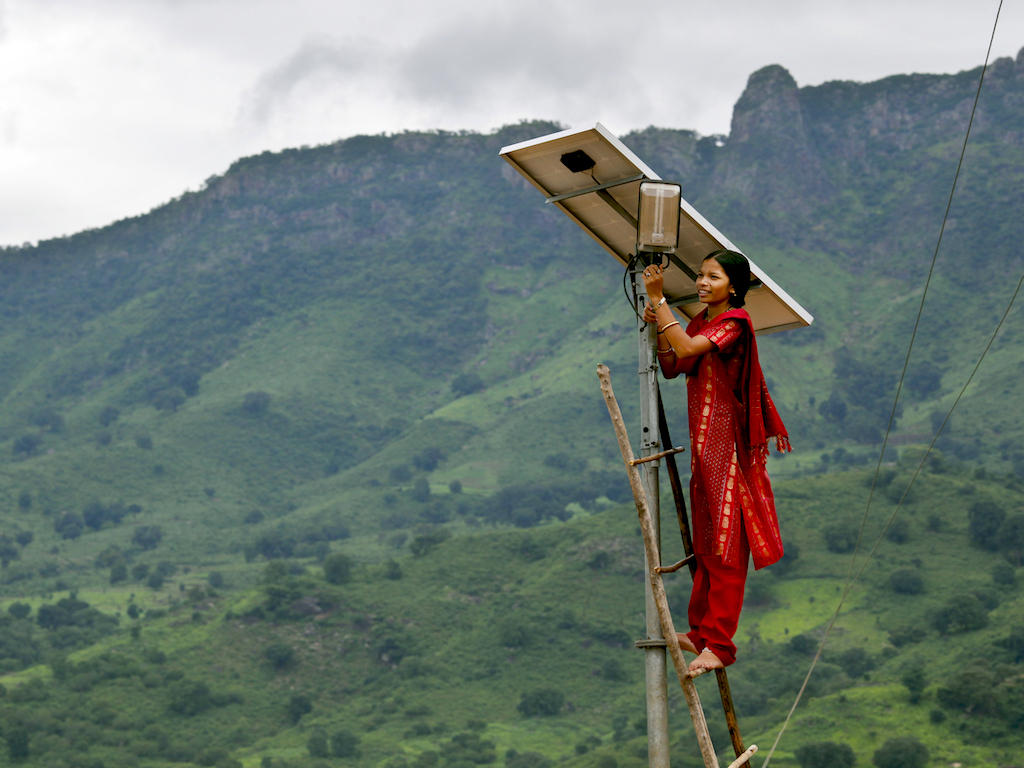4 Mins Read
We are already seeing some of the destructive impacts of climate change, with many of these events hitting the Asia-Pacific region the hardest. As it stands, we are losing the fight against climate change by lagging behind on Paris Agreement carbon reduction targets among many other goals outlined in the United Nations Sustainable Development Goals (SDGs). One of the most overlooked solutions to our current crisis is SDG Goal #5: Achieving women’s empowerment and gender equality, which has the potential to generate a domino effect on the achievement of a whole host of other goals. By considering the contributions of women as decision makers, caretakers, stakeholders and educators, and elevating their position in all leadership aspects, we might still have an actual shot at saving the planet. We need women to fight this battle.
We’ve previously covered the state of progress towards achieving the UN SDG goals in Asia. It’s a bleak picture: the release of an ESCAP report outlines how the region is currently not on track to meet any of the goals by 2030. Worse, according to the data, we are backtracking on many targets, from food system efficiency to marine conservation.
Women are the most vulnerable when it comes to the impacts of climate change. The majority of those living in poverty are women, due to a variety of factors from asset division to political representation and cultural norms. What this gendered trend means is that women are confronted with a heightened risk to extreme weather events like drought and floods, which affects agricultural yields, shelter and economic stability. Because they face these challenges directly, they are often the most well-equipped to solve the most crucial climate-related problems. Women tend to have the specialist knowledge and understanding of what is necessary to solve these issues.
Despite being in a unique position to provide effective practical solutions and policy suggestions, many women remain an untapped resource because of prevailing social biases, lack of access to training and technology, and lack of representation. If we can succeed to empower women, we will see more long-term sustainable solutions being crafted to tackle education, poverty, renewable energy, health, hunger, economic growth and decent work, and of course, climate action. The link is clear: gender equality goes hand in hand with many of our climate change goals.
Statistics back this. According to global consultancy McKinsey, advancing women’s equality would reap huge economic rewards globally. In a “full potential” situation whereby women play the same economic role in labour markets as men, we would see an extra US$28 trillion added to the global annual GDP by 2025. This money could go towards financing the climate mitigation projects that need to be underway if we are to stand a chance against climate change.
READ: McKinsey Partners Tell CEOs To Prepare For Climate Change
For instance, a report by the Global Subsidies Initiative (GSI) of the International Institute for Sustainable Development (IISD) found that redirecting just 10 – 30% of the annual US$372 billion that countries currently spend on subsidising fossil fuels would pay for a worldwide transition to clean energy. That is a fraction of the monetary gains generated from women’s empowerment, and even that number only takes into account the economic rewards derived from gender equality on the labour front.
In a more recent publication by the Global Commission on Adaptation (GCA), an estimated US$1.8 trillion invested from 2020 to 2030 in climate adaptation measures is necessary to instigate a “revolution” against global warming. From that, even more economic benefits would roll over, with the report predicting an extra US$7.1 trillion to result from implementing climate-ready infrastructure.
READ: McKinsey Partners Tell CEOs To Prepare For Climate Change
If we take action now to elevate the position of women, we are not just looking benefiting women at large (which is incredibly important in its own right), but in the bigger picture, at cultivating one of the most potent tools for climate mitigation. Rural women, who would be the primary beneficiaries of empowerment programs, could see their education opportunities and entrepreneurial roads open up alongside climate efforts. This can already be exemplified in Barefoot College in India’s Rajasthan, where rural women are given the chance to be trained as solar energy engineers, which has in turn made them active agents in sustainable change.
We are at a crossroads. We have the opportunity to change our course. At our current rate, we can expect even more frequent climate disasters and a general regression of our globally agreed goals. Empowering women and working to achieve on gender equality is not only the right thing to do, it’s vital for the future of our planet.
Lead image courtesy of Abbie Trayler-Smith / Panos Pictures / Department for International Development (UK DFID).




